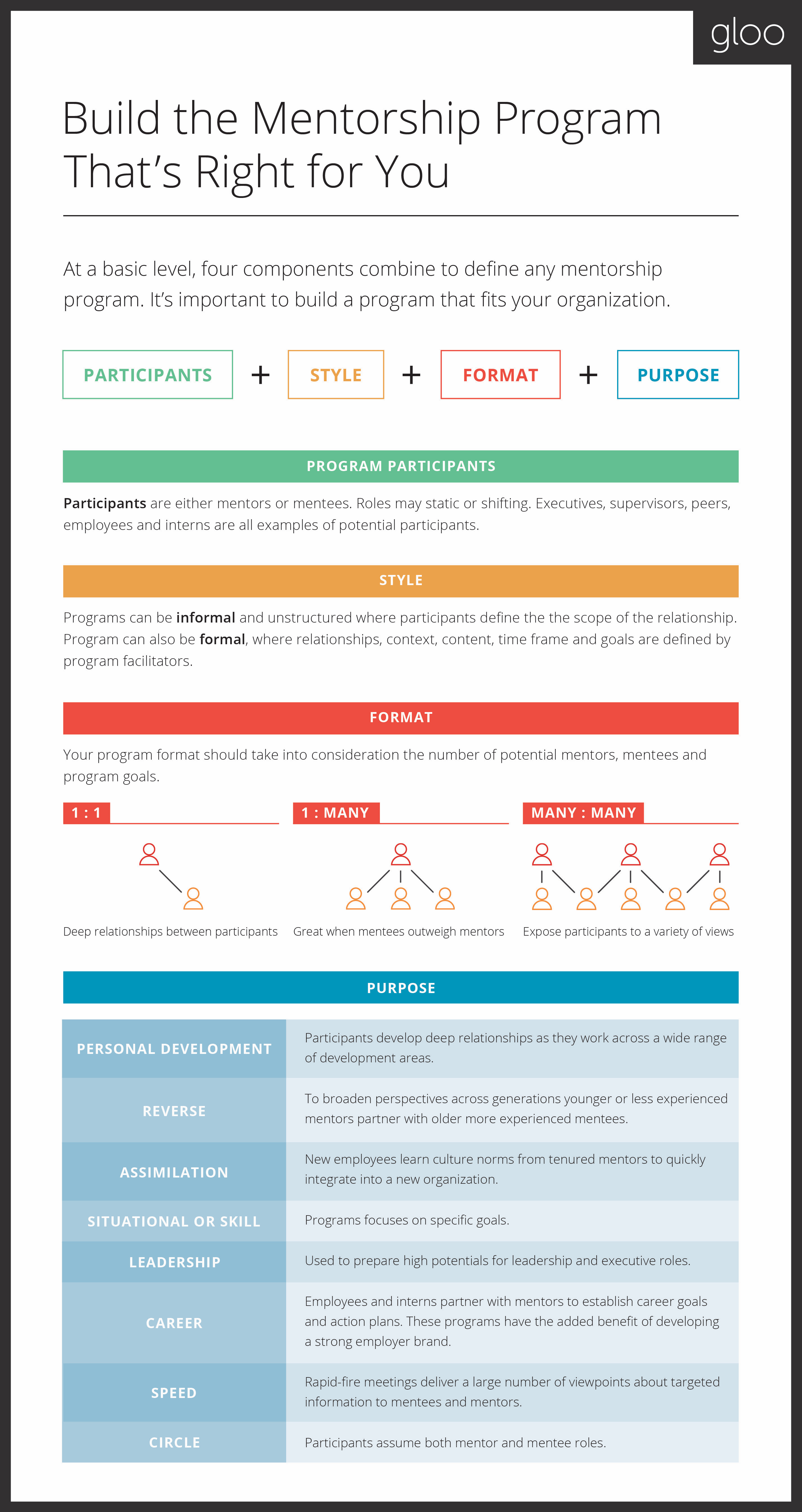The Basic Anatomy of All Corporate Mentorship Programs
You don't need to look far to see the tremendous impact well run mentorship programs can have on the health of your organization. Corporate mentor consultant, Julie Kantor, explains, “Mentors will elevate and escalate 'knowledge transfer,' which is useful in shortening a learning curve in the workplace, meaning that companies can have highly-productive employees in a much shorter period of time than they would had mentors not been implemented.”
However, with so many types of mentorship programs, it can be hard to structure your program so it’s right for you.
In this blog, you’ll learn the basic components of any mentorship program. Along the way you’ll also see some examples of the most common reasons organizations provide mentorship opportunities.
The 4 Main Components of any Mentorship Program

1. Program purpose.
Start with purpose as you build the strategy and model for your unique mentorship program. Once you establish the purpose you'll have no problem defining the other aspects of your program.
Here are just a few examples of the potentially hundreds of reasons to establish a mentorship program:
- Onboard new employees
- Train future leaders
- Career development
- Personal development
2. Program participants.
Once you define the purpose, you should have no problem identifying the participants for your program.
The most common participants in corporate mentorship programs are:
- Peers
- New employees
- Supervisors
- Executives
- Managers
- Interns
3. Program format.
Today's workplace can be complex, which may result in different needs or formats for your mentoring program. Depending on available resources and the goal for the program, relationships may be 1-to-1, 1-to-many or many-to-many.

4. Program style.
Program style is all about formality. It isn't black or white. When it comes to program style it's about how much structure is right for your organization, program purpose, program participants, and program format.
In the most informal programs, participants define the mentor-mentee relationship. In formal programs, a trained facilitator defines the terms of the relationship. This facilitator assigns partnerships, content, purpose, timeline, meeting frequency, and more.

Create the Program that's Right for You
There is no “one-size-fits-all” model for corporate mentorship programs. The best programs align to the unique needs, participants and culture of an organization. Below is an easy reference table where you can learn about some of the most common components of any mentorship program.
Don’t forget to take this quiz to discover the best setup for your organization. You’ll also see how your program compares to others from around the world.
Recommended Reading: 5 Organizations with Great Mentorship Programs that Aren't Google

